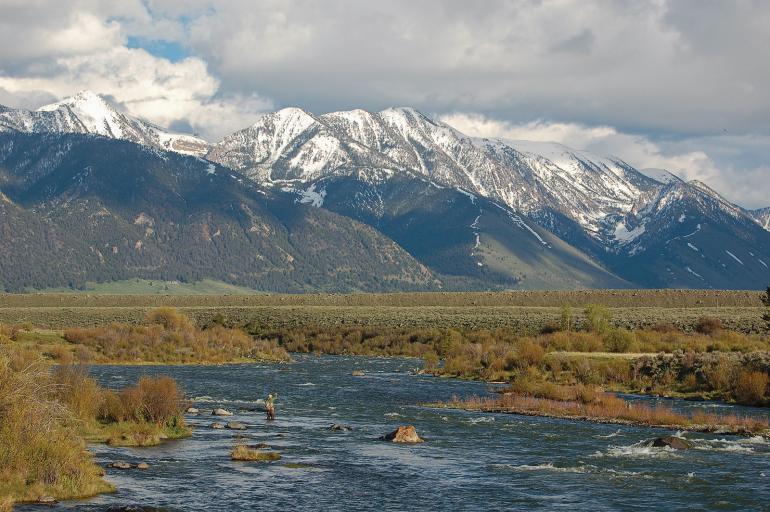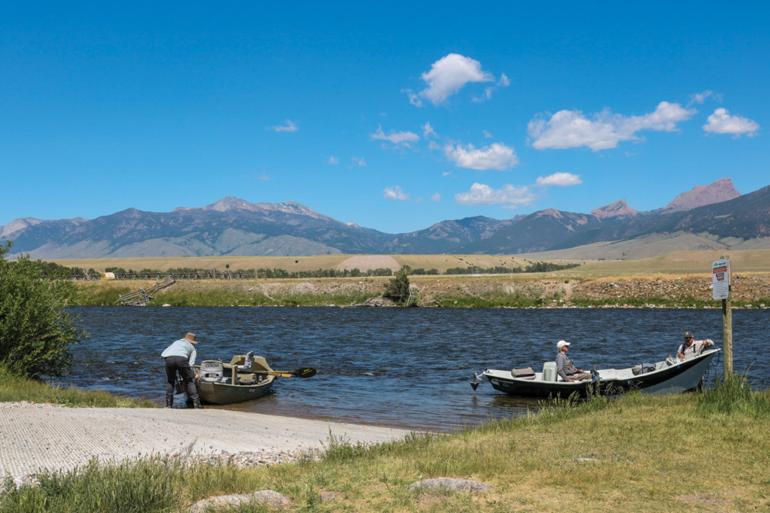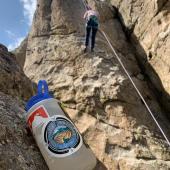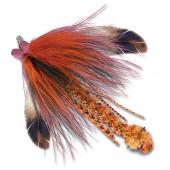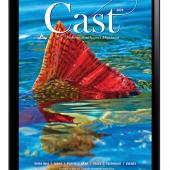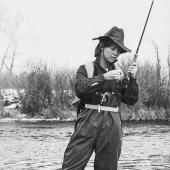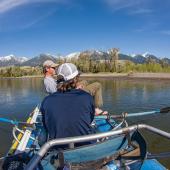Upper Madison
Fishing the 50-mile riffle.
The upper Madison River is everything a trout stream should be: cold and clear, wild but accessible, and dependable but varied. Fly anglers travel from around the world to ply the Madison’s waters, and she rarely disappoints.
Access
The upper Madison starts at the confluence of the Firehole and Gibbon rivers in Yellowstone National Park and extends to Ennis Lake. From the Park boundary to Ennis Lake, the river parallels Hwy. 287, has dozens of access sites, and is surrounded by a mix of private and public land. Within the Park, the lower section has a couple of parking areas while the upper stays close to Hwy. 191.
Flows
In general, the flows of the upper Madison are quite stable, especially between Hebgen Dam and the West Fork of the Madison, due to controlled release. Snowmelt, however, is inevitable in spring, so flows naturally increase. The West Fork can also have a significant effect on water clarity of the lower Madison section during runoff, but it usually remains fishable.
When to Go
Within Yellowstone Park, the season starts the Saturday of Memorial Day weekend and ends on October 31. Outside the Park, the Madison River is open all year, offering one of the most consistent year-round fisheries in southwest Montana.
Below Lyons Bridge, the river becomes more inconsistent, both in winter and summer, when exposed to extreme temperatures. Near Ennis, summer water temps can border on being too hot, and in winter ice jams are sometimes a reality. Boat-fishing takes place primarily March through October, but can be an option even in winter if conditions allow.
In late June and early July, throngs of anglers swarm the Madison in search of salmonflies. Who doesn’t want to catch some of the biggest trout in southwest Montana on two-inch dry flies? After the first week of July, the river remains busy, but anglers spread out, leaving a little more room to breathe. Great hatches of golden stones, different varieties of caddis, PMDs, yellow Sallies, Epeorus, spruce moths, and more keep things interesting for trout and angler until early or mid-August.
From August into October, hatches of aquatic insects decrease, but dry-fly anglers can rely on terrestrials like hoppers, moths, and ants. Hatches of caddis and fall baetis are not out of the question, but become more infrequent.
What really gets folks riled up this time of year, though, is the thought of catching the brown trout of a lifetime. Every fall, tales of trout in the low-to-mid twenty-inch range are common. To anglers that appreciate this fishery and want it to thrive, I highly suggest avoiding spawning redds and actively spawning fish.
Need an excuse to get out of the house in winter? Take a drive up to the walk-and-wade section or in between Hebgen and Quake lakes. Up there you’ll find some excellent opportunities and it’s not uncommon to have these places to yourself. Most fish are caught subsurface in winter, but occasionally you can find a pod of fish sipping midges. Streamer fishing isn’t out of the question either. You’ll likely need to traverse deep snow to access the river.
Spring is no slouch, either. Hatches of midges and baetis are common and you can expect sporadic caddis hatches, including the Mother’s Day sometime in May. Later in spring, the river will swell and become turbid. The beauty of the upper Madison is that it continues to perform, even when it looks like watered-down Yoo-hoo.
Fish
Rainbows, browns, and whitefish rule the upper Madison. Rainbows are evenly dispersed throughout the river, but brown trout numbers are much stronger in the walk-and-wade section. For reasons unknown to me, brown trout numbers have waned in the float section. Some believe it could be due to increased fishing pressure in fall when brown trout are spawning. Cutthroat, grayling, and brookies are scarce, but present.
Row vs. Wade
The upper Madison offers great opportunities to fish on foot and out of a driftboat. Fishing out of a watercraft is legal between Lyons Bridge and Ennis Bridge. Floating is allowed in other sections, but anglers must exit their watercraft to fish.
Regs
Refer to the Yellowstone National Park and FWP fishing regulations, as many sections of the Madison have special restrictions.
Getting There
Much of the upper Madison can be accessed along Hwy. 287. The Valley Garden section is on the edge of Ennis and can be fished on foot; continue upstream to access multiple fishing-access sites in the Madison Valley. Alternatively, head south from Four Corners on Hwy. 191 to access the section inside Yellowstone Park. To fish in between Hebgen and Quake lakes, both routes are about equal distance from Bozeman.
Jimmy Armijo-Grover is the outfitting manager at Montana Angler in Bozeman.


